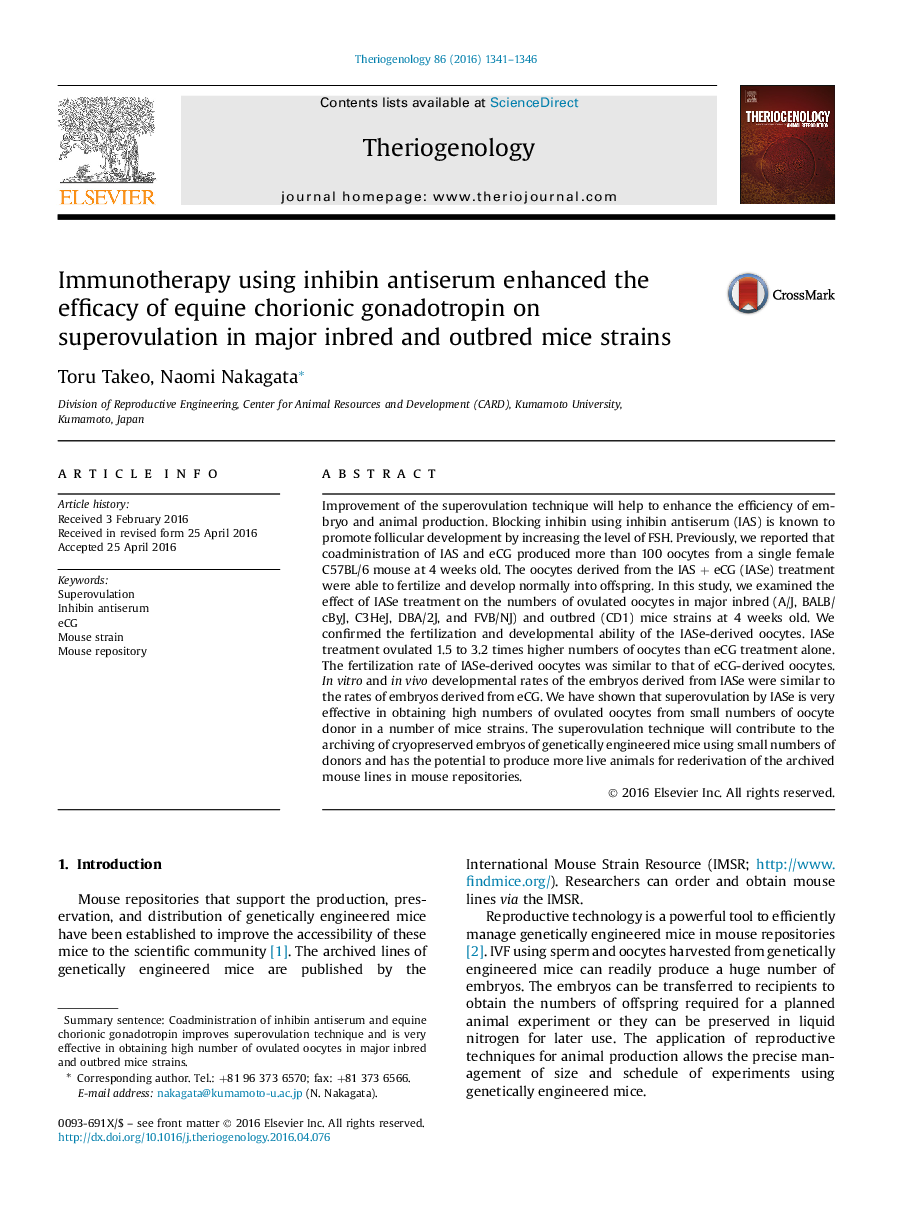| Article ID | Journal | Published Year | Pages | File Type |
|---|---|---|---|---|
| 2094769 | Theriogenology | 2016 | 6 Pages |
Improvement of the superovulation technique will help to enhance the efficiency of embryo and animal production. Blocking inhibin using inhibin antiserum (IAS) is known to promote follicular development by increasing the level of FSH. Previously, we reported that coadministration of IAS and eCG produced more than 100 oocytes from a single female C57BL/6 mouse at 4 weeks old. The oocytes derived from the IAS + eCG (IASe) treatment were able to fertilize and develop normally into offspring. In this study, we examined the effect of IASe treatment on the numbers of ovulated oocytes in major inbred (A/J, BALB/cByJ, C3HeJ, DBA/2J, and FVB/NJ) and outbred (CD1) mice strains at 4 weeks old. We confirmed the fertilization and developmental ability of the IASe-derived oocytes. IASe treatment ovulated 1.5 to 3.2 times higher numbers of oocytes than eCG treatment alone. The fertilization rate of IASe-derived oocytes was similar to that of eCG-derived oocytes. In vitro and in vivo developmental rates of the embryos derived from IASe were similar to the rates of embryos derived from eCG. We have shown that superovulation by IASe is very effective in obtaining high numbers of ovulated oocytes from small numbers of oocyte donor in a number of mice strains. The superovulation technique will contribute to the archiving of cryopreserved embryos of genetically engineered mice using small numbers of donors and has the potential to produce more live animals for rederivation of the archived mouse lines in mouse repositories.
